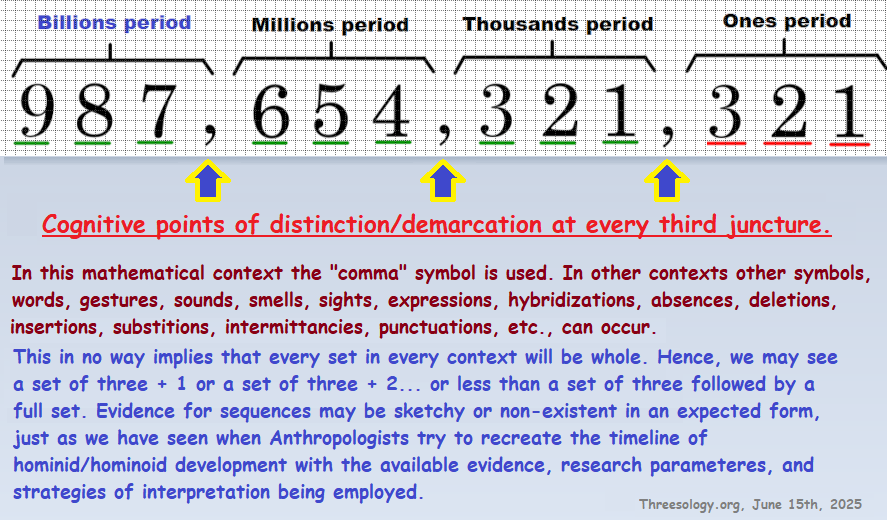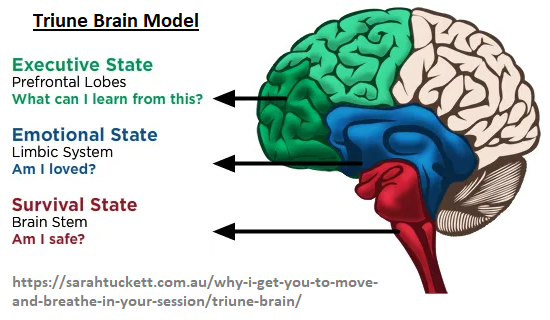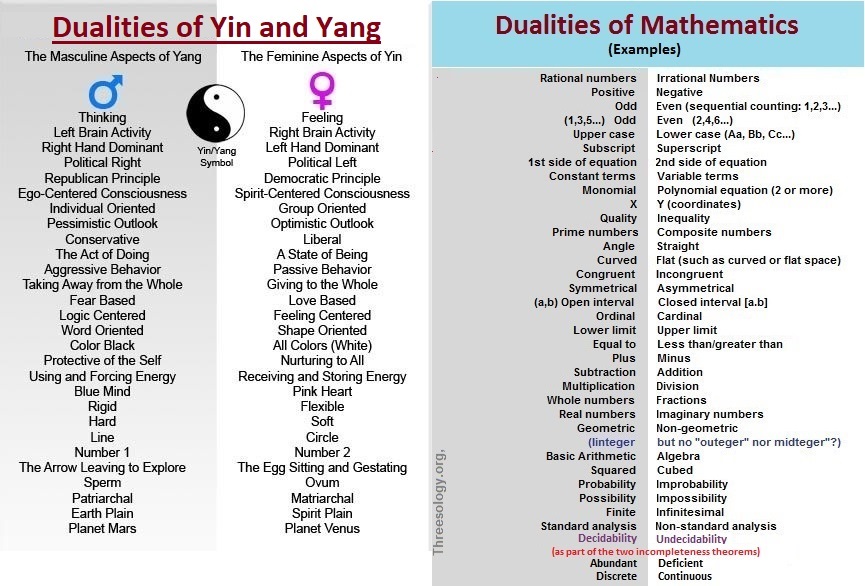Three and Counting ...3
A Study of Repeating 3s
| Home Page | Addendum | Page 2 | Page 3 |
| Page 4 | Page 5 | More Threes Examples | AI 3s and 2s |
3s Enthusiasts as of June 6th, 2025
Looking further at the use of a sport analogy for developmental biology and cognition appears to supply a few readers with material for arguing against the "threes" theme, yet it affords us the opportunity to re-think how we compartmentalize information. For example, yes we can see teams changing hands when a third strike is achieved, but someone might want to argue that we have four downs in football and four quarters in basketball. Yet, what we can see is that the human mind collates distinctions of events into relative tripartitions which appear to reflect the place value notation we see in basic counting, where after every third value a comma is inserted as a point of demarcation between sets-of-three. For example:

In those instances where we do not see a following group/activity of three and only see a one (single- monism?) or two (double- duality?) accompaniment, I am referencing a "1 more item" accompaniment as a 3 -to- 1 ratio. Others have used the phrase "3 + 1". Nonetheless, the same perception is being referenced. And even though it may be the common parlance to express the situation with the single term of "thousand", this reference restricts our ability for identifying the same underlying pattern in other subjects and over vast time periods where the constituent language has nothing to do with symbol making or vocalization. In other words, our human use of words, symbols, gestures, geometric illustrations, etc., may be helpful but this doesn't mean it doesn't get in the way for future research efforts. If we instead say the word "four" or "four numbers", this too creates moments of an overall generality which can keep us from discerning futhrer distinction, whether such distinctions are of further value or not. For example, many, if not most people will reference multiple Fairy tales as having a characteristic "three" element such as 3 bears, 3 pigs, 3 fiddlers, etc... Yet each of these examples also contain an auxiliary "one":
- 3 bears (and) Goldilocks
- 3 pigs (and) a wolf
- 3 fiddlers (and) Old King cole
In some instances we can find a so-called "four" being expressed as a 3-in-1/ 3-as-1/ 3-from-1, (etc...) situation such as:
- 3 colors in one street light
- 3 persons in one godhead (Christian Trinity)
- Buy 3 tires get 1 free
- 3 fingers to hold one pen, pencil, art brush
- 3 nesting dolls in one collectivity
- 3 common years and 1 leap year designations. A leap year is defined as:
- Any year that is divisible by 4 is a leap year (e.g. 2016, 2020, 2024).
- If the year is divisible by 100, it is not a leap year, unless it is also divisible by 400 (e.g. 2000, 2400).
- Years like 1700, 1800, 1900, and 2100 are not leap years.
- 3 degrees/awards in 1 University (Bachelor's, Master's, PhD/ Cum Laude, Magna Cum Laude, Summa Cum Laude)... for maintaining a grade average of 3.5 and above.
- 3 gasoline to 1 diesel fuel types (U.S.)
- North, South, East (and) West (The word "and" is like the comma used to separate groups-of-three in arithmetical value notation.))
- 1st-2nd-3rd base (and) Home plate/base (3 distinguished by enumeration, one is not)
- 3 amino acids the same in DNA/RNA: Adenosine- Cytosine- Guanine, 1 amino not the same: DNA - Thymine, RNA = Uracil
- 3 stop codons in RNA: 3 stop codons in DNA: TAG, TAA, and TGA; One Start codon: AUG (codes for Met).
- 3 ribbon forms for secondary- tertiary- quaternary protein structures; 1 bead form for primary structure.
- 3 synoptic gospels in the Bible (Matthew- Mark- Luke), and 1 idiosyncratic gospel (John)
- 3 Forces of the Standard Model of Particle Physics: Weak- Strong- Electro-magnetic; 1 non-standard Force: Gavity.
 |
 |
Note: There are multiple sites which speak of "4" fundamental forces. Such reviewers are like those who cannot see the Forest for the Trees. However, in the present case it is appropriate to say "They can not see the Threes for the Four-est". Using a 3-to-1 ratio model helps us to acquire further insight, at least in some circumstances.
With respect to the 4 downs in Football, here we have a reference as to the distinction of the 3rd: (Importance of 3rd down)
This pivotal moment encapsulates the essence of strategic warfare on the gridiron. The importance of 3rd down in football is etched into the psyche of players, coaches, and fans alike. It is the juncture where offensive prowess meets defensive resilience, where inches can mean the difference between maintaining possession or surrendering it.
In other words, we need to re-think our counting methodology with respect to our perceptions and application in order to better understand what appears to be a recurring stream of conserved cognitive activity taking place over time as expressed in multiple subjects. By so doing we can recognize that humanity is stuck in instances of not being able to count above "two" as expressed (for example) by the persistence of dichotomies seen in Psychology and Mathematics... which necessarily represent a practiced impediment to those whose cognitive activity is developing towards a use of trichotomization. It is a word which helps us to realize that human cognition is not only adaptable, but can be developmentally assertive... in terms of being able to count higher in order to reach a "three" expression already achieved in the multiple "threes" expressions of particle physics and biology's DNA triplet code... as well as Nature's use of a third planet.
I am referencing a commonly repeated cognitive activity which goes along with the 1-2-3 developmental scenario and other human perceptions of Nature. Our human language and symbols can get in the way of perceiving basic patterns being observed across time, cultures, and subjects. All too often human ego gets in the way and some notion of greatness or supremacy is perpetrated under various guises of humility of reverence to some ideology, such as some calling Mathematics the Queen of Science, and religion attaching itself to some notion of a supreme god, whereby as an extension thereof, they also view themselves as a chosen people with an inviolable account called scripture or Science claiming a Natural law, or governments issuing laws for compliance, etc..., all of whom from time to time have viewed themselves as a type of expressed human excellence, if not epitome of achievement for which there will never be a better ... only copycats and wannabes (want-to-be). An identification and cataloging effort of cognitive enumerations is a valuable tool of both research and instruction once a person gets past all the cultural nonsense associated with numbers under different names and practices.
While some view humanity as the dominant species, this idea of "being dominant" inclines them to think in terms of humanity having reached some lofted state of development, where the ideas of being in transition and projecting an ideology of ever more superior loftedness are not common philosophical adjuncts to commercialize notions put forth by traditional ideas. In other words, the notion of a lofted state of existence frequently takes place in ideas such as Heaven, Nirvana, god, etc., quite frequently described with some notion where a "three" theme is present. In other words, though we of today can make a list of triads from ancient religions and associated mythologies; the use of such three-patterned ideas for cultures in the past represented illustrations of a Metaphysic... of a higher state of being. In other words, the triads were leading edge considerations during eras where a pervasive mindset of duality prevailed. While we of today can take the multiple examples of triads from ancient cultures, this is not to say that they made similar collections and took them for granted just as many of us today do.
The presence and orientation of a triadic ensemble of gods (sometimes mixed with animistic themes) was like a primitive exploring the concept of "3" instead of describing it as a plurality following the common practice of using a cognitive limit of "2". Because religion represented a type of "higher consciousness" or more profound philosophical consideration beyond the convention of dualistic thinking, the view of a triadic grouping was a manifested exploration and expression of a cognitive development similar to a common person who used basic arithmetic, being introduced to the concepts of geometry, trigonometry, algebra and the calculus. The mental orientation of most people apparently was either one... or "singularly" self-oriented or a practiced duality, even though those in the past like those of the present are oblivious to their day-to-day usage of basic (1-2/one-two) dualistic compartmentalizations of interest and activity.
However, Nature itself is involved with this "loftedness" by the use of three fundamental atomic particles (Neutrons- Protons- Electrons), 3 families of fundamental particles, the Earth being the 3rd planet, DNA and its triplet code, three Germ layers, etc... Yet, one must wonder if Nature is counting up or engaged in a count down, due to the incremental deterioration of the planetary system. If a three theme is an epitome of expression attained by Nature, then we are looking at a Conservation of Number as a survival mechanism.
Many people have ventured into an exploration of some "lofted three" theme, a few of which I list at the bottom of this page.
This idea of "loftedness" is sometimes referred to as an attempted transcendence... or higher consciousness, or Nirvana... which every religion, every sport ("the zone"), every business, every Eastern philosophy, etc., attempts to portray one or another product, exercise, ritual, ceremony, ideology, wardrobe, etc., as a means to achieve this... through imagination or combativeness such as we see in sports and warfare. All of us in our own way strive to go beyond some point... real or imagined and yet rarely take stock of the identifiable repetitions of cognitive activity aligned with Nature suggesting transitional states or stages of achievement (or retreat/digression) so as to identify the footing upon which humanity stands or thinks it stands. While you may consider someone's achievement (perhaps marked by an identifiable "three" reference) is commonplace and not worthy of your own considerations or involvement, to another they are a milestone. Multiple acts of attempted transcendence strive to leave behind or go beyond someone's measure of former achievement. The problem is, humanity as a whole has not learned how to devise a means to identify where it is as a species in order to realistically step beyond itself and not by means of an imagined place, position, or articulated rationalization so readily available in religion, Eastern philosophy, politics, sports, drugs, liquor, music, business, careers, family, gaming, industry, electronics, etc...
The use of enumeration allows us to attempt to be unbiased, even though the use of any symbolism created by humanity inherently comes with some level of bias due to how the symbolism was created. Nonetheless, enumeration permits us to see limits, applied variability, and repetition across multiple subjects for the entire history of humanity, whether or not some interpretations of behavior are based on educated guesstimation or not. Such a methodology of looking into the development of human cognitive activity over time and distance of usage, can also show us the state of the mind of the researcher... where "showing one's work" is a necessary requirement for anyone working with numbers.
In our efforts to piece reality together... to find some meaning or appreciable rationale, we are inclined to the use of enumeration. In others, a list of threes expresses a model of counting. Before the use of numbers came the use of vocalized sounds which later developed into expressions we of today would say constitute words. Like infant babbling, the vegetative sounds eventually give way to precursor words that we may call babbled utterances involving simple consonant/vowel collections that are later repeated in what are frequently referred to as Canonical or Reduplicated, and some profiles may offer a three-part sequencing thereof in the form of "Repetitive- Canonical- Reduplicated" Babbling.
Just as for infants whose brain eventually matures to develop utterances we call words by being introduced to a culture of stimulation were words are used and are not brought up in isolation from speech like a Feral (wild) Child. Since humanity was initially brought up in situations where words were not yet invented, the development of the first word(s) in hominid history may well have followed a one- two- three development which brought us to our present day usage of the three-patterned Word Order arrangement. Clearly the present day usage of Word Order had an origin in a more simple structure.

Unless one wants to think humanity was born with a counting system already implanted in its psyche and its presence has had to take a circuitous route to be acknowledged, then the development of the human psyche may thus necessarily have an ability to at least conjecture about reality in terms of associated enumerations. For example, here is a sequence of ideas concerning the Universe and its origination involving an attempted organization by way of an applied enumeration:
- We have the concept of 1 Universe created by 1 god.
- We also have the view that there is a parallel Universe, which is the value of "2">
- We also consider the possibility of a multi-verse.
We also see a variation in the development of biology, of which the following are examples;
- Single Stranded RNA World came first
- Double stranded DNA World came second
- Triple conformation Protein World came third
(A singlet code for RNA/DNA is thought to have arisen first, followed by a doublet code, than the present triplet code.)
- A single "Monoploblastic" germ layer developed producing simple animal life forms such as the sponges.
- A double "Diploblastic" germ layer developed producing later animal life forms such as the Cnidaria and Ctenophora, (such as jellyfish).
- A triple "Trploblastic" germ layer developed producing the range of complex animal life forms from earth worms to humans.
- Adenosine (mono-1) phosphate [AMP] energy sources came first. [Also: antimicrobial peptides (AMPs)]
- Adenosine (di-2) phosphate [AMP] energy sources came second.
- Adenosine (tri-3) phosphate [ATP] arrived 3rd in biological history and became the primary source of energy for cellular processes.

(A nucleotide is an organic compound made up of three subunits: a nucleobase, a five-carbon sugar, and a phosphate group. T)
(Basketball is thought by some to have begun its history with a 1-point shot, followed by a 2-point shot, and now we also have a 3-point shot.)
- In 1891, the game was invented, and all points made by the player were counted as 1 point.
- In 1893, free throws were introduced, and both free throws and field goals were counted as 1 point.
- In 1896, field goals started counting as two points.
- In 1967, the three-point shot was introduced by FIBA, and it was adopted by the NBA in 1977 and by the NCAA in 1980.
Information derived by way of a google search query: "history of the point system in basketball"
A look at the very few animals that have been domesticated out of thousands of existing animals, we find that Zooarchaeology has identified three classes of animal domesticates which also reveals a time line of human cognitive development. In this example we a changing perspective following that which may have at first invoked fear followed by the image of an available menu, followed by animal worship and imitation (although the reader may have their own idea of how the sequence came about):
- Pets (dogs, cats, ferrets, hamsters, etc.)
- Livestock (cattle, sheep, pigs, goats, etc.)
- Beasts of burden (horses, camels, donkeys, etc.)
As for the development of plants, we find that there are three based on the Water Use Efficiency involving carbon fixation:
-
C3
Plants(Temperate climate) Came 1st in History about 400 million years ago: (About 85% of the plants on Earth use the C3 pathway to fix carbon via the Calvin Cycle.) - C4 Plants (Tropical or semi-tropical climate) Came 2nd in History about 30 million years ago. About 3% or 7,600 species of plants use the C4 pathway, with 85% of them being angiosperms (flowering plants)1. C4 plants account for 25% of global terrestrial primary productivity and include major human crops such as corn, sugar cane, millet, sorghum, pineapple, daisies, and cabbage.
- CAM Plants Came 3rd about 20 million years ago. (Desert or arid (xeric) habitats) The percentage of CAM plants is not uniform.
When surveying the types of legislative systems used by humans, (not including very primitive practices in the distant past and other methodologies which might be preferenced as a research model); we find there are three main types which typically perform a set of functions which also can be enumerated:
- Consultative: The legislature advises the ruler on matters of law and policy.
- Parliamentary: An elected legislature makes laws and serves as the executive branch of government.
- Congressional: Elected groups of legislators make law and share powers with other branches of government. typically perform a basic set
of functions:
- They make and revise laws.
- They engage in administrative oversight.
- They represent constituents to the government.
With respect to Cameralism- ('Cameralism' is a science of administration that emerged in the eighteenth century, focusing on state-governed military bureaucracies and the education of European bureaucrats.); we find three representations:
- Unicameralism- Having a single Legislative chamber (such as Nebraska in the U.S.)
- Bicameralism is the dominant model found in federal and quasi-federal government systems.
- Tricameralism- Tricameralism is the practice of having three legislative or parliamentary chambers. It is contrasted with unicameralism and bicameralism, which are both far more common. No national government is currently organized along tricameral lines.
When we look at the enumerations of worshipped gods, we have the following distinct categories. Interestingly, the adoption of a multiple god belief is thought to have occurred first among early peoples, with the concept of a single god coming last in the cognitive series. It should be further noted that beliefs in gods are regularly lumped into the same intellectual sandbox as mythology, cosmology, religion and witchcraft/Wiccanism. Also note that the varying quantitative cognitive categories will sometimes overlap features, thus indicating transitional stages of development:
- Many, multiple gods... typically 4 or more in quantity; (Polytheism, List of Pantheons)
- The Christian Trinity is sometimes viewed as a modernized variation of a Polytheistic view practiced in a labeled monotheism.
- Tritheism is defined as a polytheistic non-trinitarian Christian conception of God in which the unity of the Trinity and, by extension, monotheism are denied.
- 3 gods such as the multiple Triads in religion and mythology as well as Astrology. (It is not customary to find people discussing examples of Science as being cognitively similar, though underlying superstitions abound.)
- 2 gods such as Mother/Father; List of Twins; Duotheism; Dualism in Cosmology
- 1 god (Monotheism) (Dualistic god concepts abound and the concept of the Trinity is sometimes viewed as a polytheistic concept.)

With respect to the three Monotheistic religions:
- All were developed in desert environments, and might be quite different or non-existent if the environment was different, such as providing more resources.
- Judaism preceded Christianity which Preceded Islam. (We can assume all of them preexisted as cults and perhaps as "anti-establishment" secret societies.))
- Polytheism was the dominant religion of the ancient middle east (where monotheism eventually arose) and can be viewed as a national orientation.
- Monotheism was a regional practice (particular region within a nation) that became dominant as the Jews migrated and used the idea as an attempted bonding mechanism to keep the people together. It was a personal (egotistical) identity. However, the worship of a single god was at first a secret practice so as not to arouse too strong of an opposition from a reigning authority that was Polytheistic.
- Judaism has its beginning somewhere in the 3500 - 4000 BC (Although different sources give different time lines for specific events: Judaism Time Line)
- The oldest/first Triad of gods is dated to the middle of the third millennium B.C., appearing in the ancient civilization of Sumer in southern Mesopotamia.
- QUESTION: Did Judaism begin to adopt the usage of triadic referencences and compartmentalizations of ideas in "threes" around the same time as the idea of triads of gods came into vogue? Does this signal a developmental shift in human cognition?
Upon looking at the development of the brain, the process of development in terms of a basic model of overlapping ascension, was proposed by Paul Maclean as a Triune Brain Theory commonly thought to have proceed along a 3-step course of Reptilian- Limbic- Neocortex, or lower, middle and upper brain processes:
- Reptilian Brain (Basal Ganglia)
- Limbic Brain (Emotional Center)
- Neo-cortex (Rational Mind)
However, with respect to the ascension of developing cognitive processes, I decided to look a bit closer at functional attributes, again noting that overlapping integrations can take place. In this model of a triune brain I differentiated functional attributes which uncovered a distinct 1-2-3 associationist model involving enumeration:
- Reptilian brain is singularly oriented towards a self-survival "oneness".
- Right Hemisphere attributes show a clear orientation towards a usage of duality.
- Left Hemisphere attributes show a clear orientation towards a usage of triplicity.
Speaking in terms of Evolution subject to the forces of environmental pressures such as the ongoing incremental deteriorations of the planet and its system of partners, the human brain is appears to be moving along a course of having a greater reliance on left-hemisphere attributes and their basic Trichotomic patterning. See: Brain Hemisphere Attributes
For those of you who have ventured into a history of Mathematics, your encounter with humanity's early fledgling attempts at constructing a counting system, can generally be described in terms of three number words: "One- Two- Many", as a counting methodology related to a similarity of human cognitive activity. While different subjects use their own language and symbols, all of them represent rudimentary counting systems... with the third item sometimes portraying that which lays beyond the two as an all encompassing mystery.
Instead of the word "many", we can see an assortment of Labels and symbols such as plurality, multiplicity, much, more, heap, pile, bunch, infinity, etc., including amounts such as thousands, millions, billions, trillions, gazillions, etc... In other words, different time periods and different languages used their own linguistic/cognitive means for referencing the "Many".
With respect to the present day perspective of their being only one god, (a theme by the way perpetrated by the egotism of the early Jews who thought of themselves as being the "chosen people" destined for a "chosen place") which was not the ancient standard among ancient peoples; we can find the usage of ideas involving twins, triples and multiplicities that are sometimes called pantheons. And even though in your private researching you may come across someone speaking of ancient cultures which has a specific enumeration, the point is that the human mind was indulging in enumeration. However, my research into the threes phenomena has uncovered a very serious precedent about the current state not only of Mathematics, but Psychology and Philosophy as well.
A look at the history of mathematics from a perspective of "threes" that I call 'Trichotomization', we can see a troubling cognitive pattern. The sequence goes something like this:
Mathematics as we know it today arose from a (generally speaking) "1-2-Many" counting sequence based on pairing and associated with commerce (e.g. bartering/trading). This is not to say that the development was sequentially smooth without interruption or regression, nor that it didn't occur in multiple places with different stages of accomplishment.
The usage of a "pairing" method for the development of Mathematics has been expanded and can now be seen as a list of dualities, quite reminiscent of the cognitive exercise explored by the ancient Chinese called the Yin/Yang philosophy. Take a look at some sample lists:

Date of initial posting: Friday, June 6th, 5:27 AM
Updated Posting: Tuesday, June 17th, 11:52 AM
